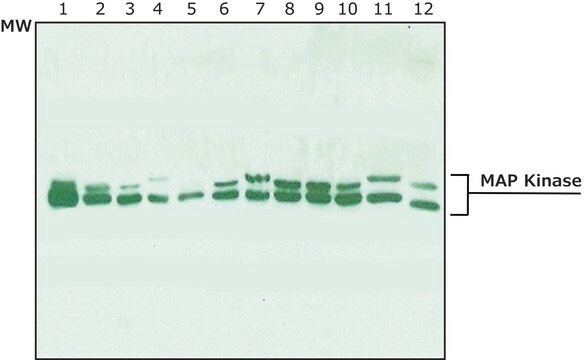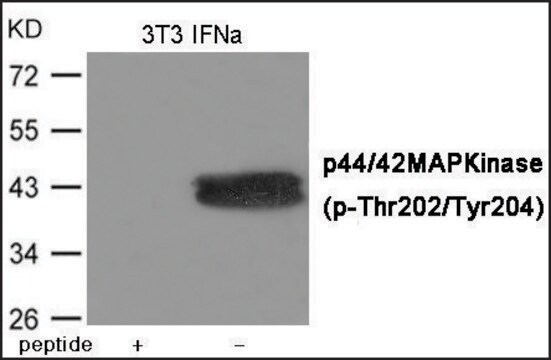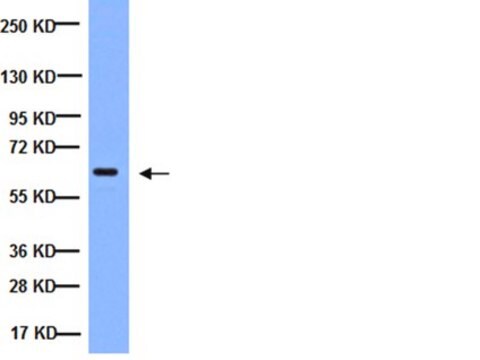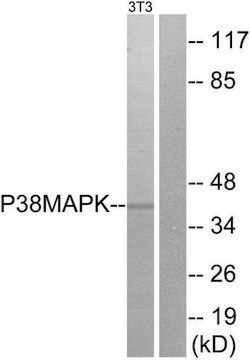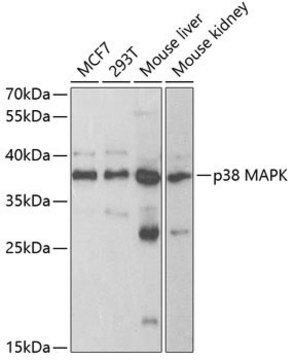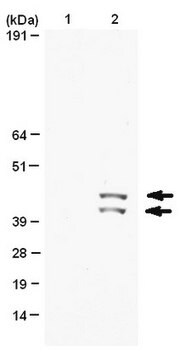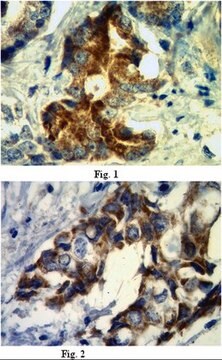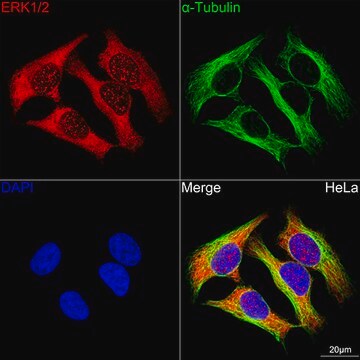05-797R
Anti-phospho-Erk1/2 (Thr202/Tyr204, Thr185/Tyr187)Antibody, recombinant clone AW39R, rabbit monoclonal
clone AW39R, Upstate®, from rabbit
Synonym(s):
Erk1, Erk2, p44-MAPK, p42-MAPK, MAPK2, PRKM2, p41mapk, PRKM1, p44, ERK2, P42MAPK, ERK, p42, MAPK1, ERT1, ERT2, Mitogen-activated protein kinase, MAP Kinase 2, MAP Kianse 1, MAPK
About This Item
Recommended Products
biological source
rabbit
Quality Level
antibody form
purified immunoglobulin
antibody product type
primary antibodies
clone
AW39R, monoclonal
species reactivity
human, mouse, rat
manufacturer/tradename
Upstate®
technique(s)
multiplexing: suitable
western blot: suitable
isotype
IgG
shipped in
dry ice
target post-translational modification
phosphorylation ((pThr202/pTyr204), (pThr185/pTyr187))
Gene Information
human ... MAPK3(5595)
mouse ... Mapk3(26417)
rat ... Mapk3(50689)
General description
Specificity
Immunogen
Application
Signaling
MAP Kinases
Kinases & Phosphatases
Quality
Target description
Linkage
Physical form
Storage and Stability
Analysis Note
PDGF-treated NIH/3T3 cell lysates
Legal Information
Disclaimer
Not finding the right product?
Try our Product Selector Tool.
Storage Class Code
12 - Non Combustible Liquids
WGK
WGK 1
Flash Point(F)
Not applicable
Flash Point(C)
Not applicable
Certificates of Analysis (COA)
Search for Certificates of Analysis (COA) by entering the products Lot/Batch Number. Lot and Batch Numbers can be found on a product’s label following the words ‘Lot’ or ‘Batch’.
Already Own This Product?
Find documentation for the products that you have recently purchased in the Document Library.
Our team of scientists has experience in all areas of research including Life Science, Material Science, Chemical Synthesis, Chromatography, Analytical and many others.
Contact Technical Service